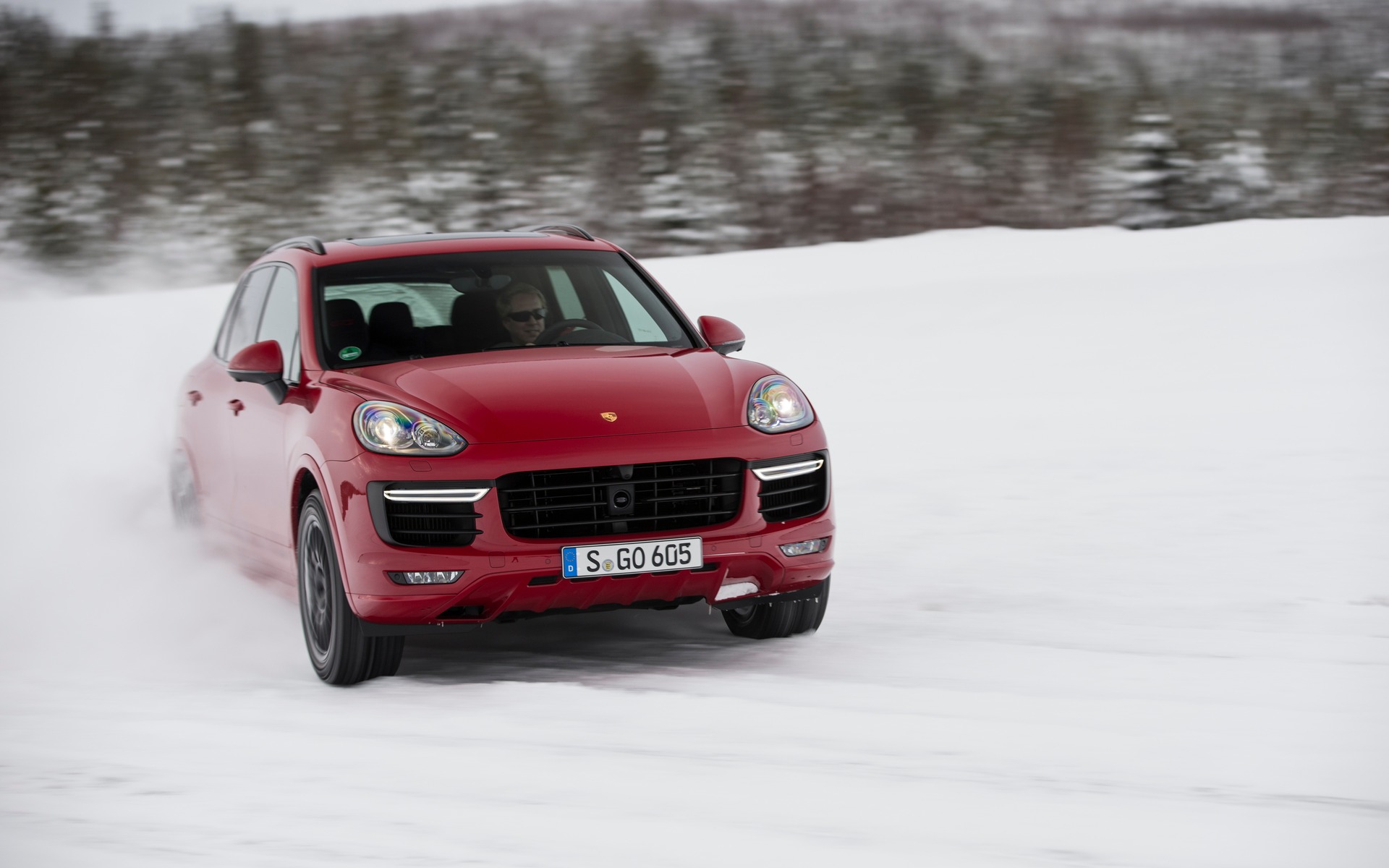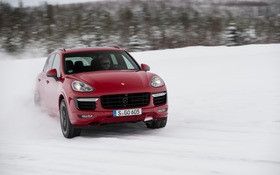2016 Porsche Cayenne GTS and Turbo S: Dynamic And Exclusive

| Strong points |
|
|---|---|
| Weak points |
|
While the 911 Carrera is the undisputed belle of the ball at Porsche, the Cayenne is the brand’s top earner. It’s a veritable cash cow for the German manufacturer, with more than 600,000 Cayennes sold since it first hit the market. It now comes in several variations, including the most recent GTS and Turbo S. This article outlines our first encounter with these latest additions to the Stuttgart-based automaker’s most prolific and lucrative line.
One less convincing argument
Launched in 2007, the Cayenne GTS’s mission has always been to please driving diehards, for whom performance is of utmost importance. The same objective holds true today, but the vehicle has lost some of the aces it had up its sleeve. During its last makeover, it sacrificed its 4.8-litre naturally-aspirated V8 in a bid to comply with increasingly strict antipollution standards. In its place, there’s the same 3.6-litre V6 bi-turbo found in the Cayenne S, but its computer management has been revised to deliver more power and torque. Compared to the old naturally-aspirated V8, this turbocharged V6 produces 20 more horsepower (for a total of 440) and more torque, while being 0.9 litres per 100 km more economical on average, but it doesn’t have that classic, visceral sound that was such a large part of the previous version’s charm. As a result, the new GTS is less thrilling than the old version. It’s too bad, but it’s a sign of the times. Naturally-aspirated V8s aren’t as popular anymore and Porsche isn’t the only manufacturer that has had to bid farewell to these fabulous engines. AMG and BMW’s M Division have already moved on to turbos, and even Ferrari seems to be on the same track.
- Also: Going Full Throttle With Walter Rohrl In A Porsche 911 Turbo S On Sheer Ice
- Also: Say Hi to the Porsche Cayenne Platinum
Sport-calibrated chassis
So that’s the engine, but what about the rest of the car? Here, the vehicle has met expectations in every regard. The Cayenne GTS relies on an exceptional chassis and combines a spring suspension and Porsche Active Suspension Management (PASM). It’s also 20 millimetres lower than the other versions of the Cayenne and comes with factory-standard 20-inch rims. With sharper dynamics, it made us forget that it’s a two-ton SUV, even on the icy and snowy circuits of the Skelleftea Drive Center. This first drive was a thrill for all of us, especially when we deactivated the electronic stability control system and sent the GTS skidding using the accelerator for control. In lateral transitions during a slalom exercise, the car proved playful—which is promising for more favourable conditions. We can’t wait to exploit its full performance potential.
Style-wise, the GTS borrows numerous components form the Cayenne Turbo, such as the front bumper with large air intakes and headlights, but it has 20-inch RS Spyder design rims. The SportDesign package with side skirts and fender flares rounds out the picture for this sporty-looking SUV. The same goes for the alcantara-covered passenger compartment, where the GTS logo appears on the headrests of the sport seats. The instrumentation features a rev counter with a red background front and centre. At the end of the day, the GTS comes in between the Cayenne S and Cayenne Turbo for performance and price.
The Turbo S at the top of the heap
$178,100. Yep, that’s the price of the Turbo S, which comes factory standard with almost all the options that Porsche could think of for the Cayenne line. The only thing left for the client to choose is the colour of the body and interior. No more interminable options catalogues. To get the full meal deal, just check off the Turbo S box on the order form. Ceramic composite brakes, 21-inch rims, Sport Chrono pack, Porsche Traction Management (PTM), Porsche Dynamic Chassis Control (PDCC) and Porsche Torque Vectoring Plus (PTV Plus)—it’s all part of the factory-standard equipment for the Turbo S. This vehicle prides itself on featuring the most powerful engine in the line-up with 570 horsepower.
7 minutes, 59 seconds: that’s the Turbo S’s time on the Nordschleife in Germany, the favourite playground for the creations of wild German engineers. The Turbo S’s main virtue is the incredible boost you feel when you put the pedal to the metal, and that alone says a lot about the vehicle. On the snow-covered tracks of the Skelleftea Driving Center, the traction and stability control systems were very efficient, proving that electronics help make this kind of performance possible today. As it’s impossible to maximize the Cayenne Turbo S’s full performance potential on public roads without risking your driver’s license, buyers who choose this unique vehicle do so because they want to be seen driving the most powerful and expensive SUV out there. And vanity never looked so good.











